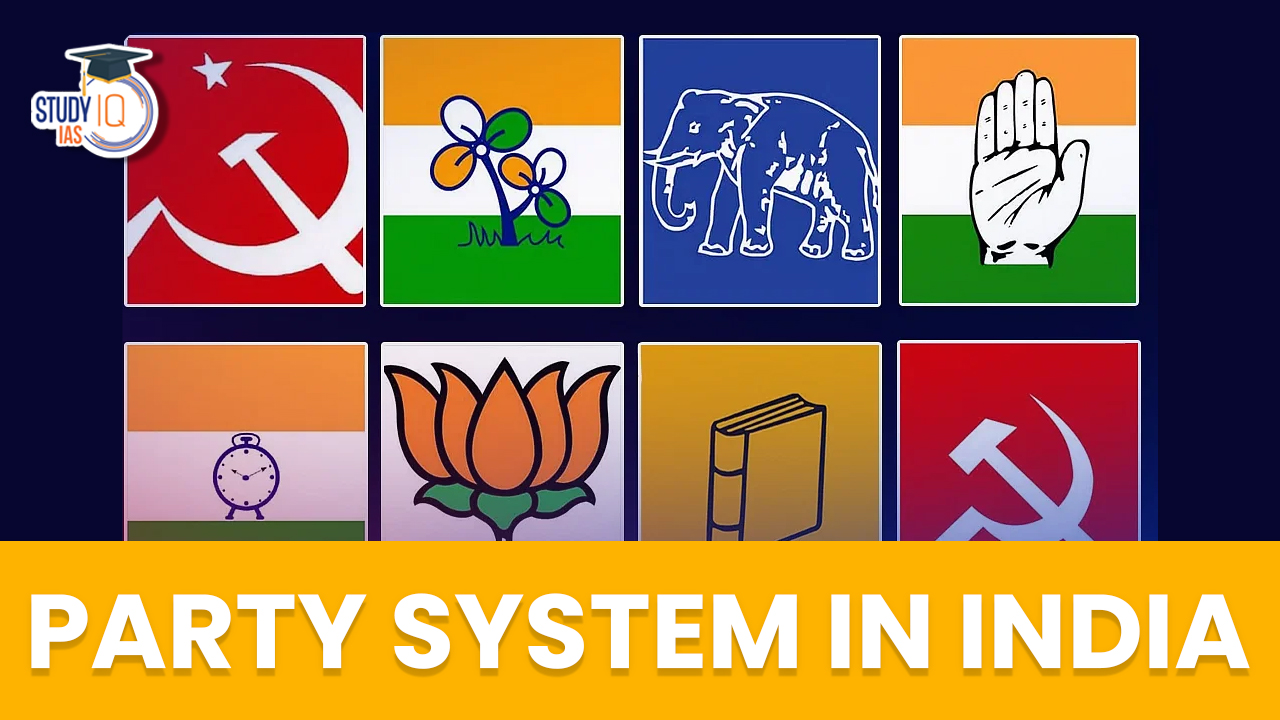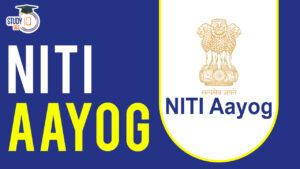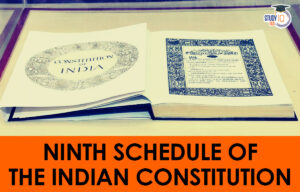Table of Contents
Political parties are the cornerstone of democratic governance, they help people take part in politics, represent their views, and run the government. These parties are groups of people with similar political ideas who want to influence government policies and gain power legally. In modern democratic states, political parties come in various forms and serve different ideological and organizational purposes. Learn about what political parties are, their types, features, and the different party systems in this article.
Party System in India
A political party is a group of people who join together to promote a specific plan and aim to take control of the government legally to implement it. In today’s democracies, the fight for power is clear and open. This makes political parties very important. Their duties include preparing for elections, sharing political information, campaigning, and electing lawmakers.
| Characteristic | Description |
|---|---|
| Multi-Party System | India has many political parties with different beliefs and interests. |
| One-Dominant Party Systems | The Indian National Congress used to be very powerful, but its influence has decreased. |
| Lack of Clear Ideology | Many parties don’t have clear beliefs and are guided by practical decisions. |
| Personality Cult | Charismatic leaders often play a big role in these parties. |
| Emergence of Regional Parties | Regional parties are becoming more important, focusing on local interests and identities. |
| Factionalism and Defections | Factionalism, defections, and splits within parties are common, leading to instability. |
| Lack of Effective Opposition | Internal conflicts and differing goals make it hard for opposition parties to come together. |
Definition and Types of Political Parties
Political parties are organized groups of individuals with shared political ideologies and objectives. They strive to gain political power through elections and influence government policies to align with their beliefs. There are four main types of political parties:
- Reactionary Parties: These parties want to keep traditional ways of living and governing. They resist changes and often want to go back to old social norms and values.
- Conservative Parties: Conservative parties aim to keep things as they are or make slow changes. They focus on stability, traditional values, and small reforms.
- Liberal Parties: Liberal parties want to promote personal freedoms, equality, and social progress. They support civil rights, social justice, and expanding democratic freedoms.
- Radical Parties: Radical parties want to completely change current social and political systems. They push for major changes and may seek to overthrow existing systems.
Ideological Classification
Political parties are also grouped by their beliefs. Traditionally, they are placed on a scale from left to right:
- Leftist Parties: These parties focus on social equality and want the government to help reduce economic differences. Examples include socialist and communist parties.
- Centrist Parties: Centrist parties take a middle ground, mixing ideas from both the left and right. They often look for practical solutions and compromise.
- Rightist Parties: Rightist parties support conservative values, free markets, and limited government involvement. They emphasize individual freedoms, business growth, and traditional social values.
Party system in India: History
The history of the party system in India is a rich tapestry woven with diverse political ideologies, regional dynamics, and sociocultural factors. Let us explore the evolution of India’s party system over time:
| Period | Key Features |
|---|---|
| Pre-Independence Era |
|
| Post-Independence (1947-67) |
|
| Emergence of Opposition (1967-89) |
|
| Coalition Politics (1990s) |
|
| Contemporary Landscape (2000s-present) |
|
Party system in India: Main Feature
India’s political landscape is marked by a robust multi-party system, attributed to the vastness and diversity of the nation, universal adult franchise, and unique political processes. With the highest number of political parties per capita globally, India sees a plethora of communal and non-communal, left, center, and right-wing parties. The result is a norm of coalition governments, hung legislatures, and assemblies.
Multi-Party System in India
- Diversity and Fracture: India’s vast size, societal diversity, and universal adult franchise have led to a multitude of political parties, making it the country with the highest number of political parties per capita globally.
- Quantitative Overview: Before the 2019 Lok Sabha elections, India had 7 national parties, 52 state parties, and 2354 registered unrecognized parties.
- Coalition Politics: The presence of communal and non-communal parties, as well as left, center, and right-wing groups, results in frequent coalition governments, hung legislatures, and assemblies.
One-Party Dominance
- Historical Context: The Indian National Congress held centralized power from Independence until the late 1970s, both nationally and in most states.
- Era of Pluralism: Since 1989, one-party rule has dissolved, witnessed in elections from 1989 onwards, with various parties assuming power at different levels.
Personality Cult
- Leader-Centric Politics: Parties often revolve around prominent leaders, with their personalities overshadowing party principles.
- Examples: Nehru, Indira, and Rajiv Gandhi’s leadership significantly contributed to the popularity of the Congress Party, while leaders like MG Ramachandran and NT Rama Rao gained recognition for the AIADMK and TDP, respectively.
Lack of Opposition
- Ineffective Opposition: Despite the end of one-party dominance, a cohesive, strong national opposition has rarely emerged, with opposition parties often lacking unity and coherent strategies.
- Consequences: Weak opposition impedes parliamentary democracy’s checks and balances, hindering effective governance and accountability.
Lack of Proper Organization and Ideology
- Organizational Challenges: Many parties struggle to maintain organizational structures, with power dynamics overshadowing ideological coherence.
- Ideological Vacuum: While parties often espouse democratic, secular, and socialist values, pragmatism and pursuit of power dominate over clear ideological positions.
Factionalism and Groupism
- Internal Division: Factionalism within parties leads to frequent splits, mergers, and realignments, impacting party stability and coherence.
- Examples: Congress and Janata Dal experienced numerous splits, reflecting the pervasive influence of factionalism.
Extra-Constitutional Means of Power Acquisition
- Unethical Practices: Parties resort to illegal tactics alongside legitimate means, including violent protests and populist rhetoric, to consolidate power.
- Populist Appeals: Populist slogans and programs, such as “Garibi Hatao,” have been used to garner popular support, often at the expense of substantive policy discourse.
Lack of Discipline and Communalism
- Discipline Deficit: Party members frequently disregard rules and engage in opportunistic behavior, switching parties or forming new ones for personal gain.
- Communal and Caste Politics: Political parties exploit caste and religious identities for electoral gains, undermining the broader public interest.
Recognition of National and State Parties
The Election Commission of India gives official recognition to political parties based on how well they do in elections. National parties need to meet certain requirements, like getting a minimum percentage of votes and winning a specific number of seats in Parliament. State parties are recognized based on their performance in state elections. Being recognized as a national or state party allows them to enjoy special benefits, like using their own party symbols and getting access to state media for their political broadcasts.
Importance of Party System in India
The party system in India plays an important role in the functioning of democracy and governance, serving several important functions:
Representation and Governance
- Political parties field candidates in elections to represent the interests of the public and formulate policies to address their needs and concerns.
- Parties develop manifestos and policies to appeal to voters, contributing to informed electoral choices.
Legislative Function
- Ruling parties enact laws and policies, while opposition parties scrutinize and critique government actions, ensuring accountability and transparency.
- Debates and discussions in Parliament allow for the exchange of ideas and perspectives, leading to informed decision-making.
Formation of Public Opinion
- Parties discuss politics and gather public opinion on different issues, helping shape conversations and influence policies.
- They offer spaces for citizens to share their views and take part in democracy.
Party System in India UPSC
Political parties play a vital role in shaping democratic governance and representing diverse societal interests. Understanding the types, characteristics, and party systems prevalent in modern democracies is essential for analyzing political dynamics and policy outcomes. In India, the multi-party system, dominance of regional parties, and challenges of factionalism and ideological coherence underscore the complexities of democratic politics. As political landscapes evolve, parties continue to adapt to changing societal dynamics, presenting both opportunities and challenges for democratic governance.


 NITI Aayog Report on India’s Hand and ...
NITI Aayog Report on India’s Hand and ...
 9th Schedule of Indian Constitution: His...
9th Schedule of Indian Constitution: His...
 Mechanisms to Combat Judicial Corruption...
Mechanisms to Combat Judicial Corruption...





















